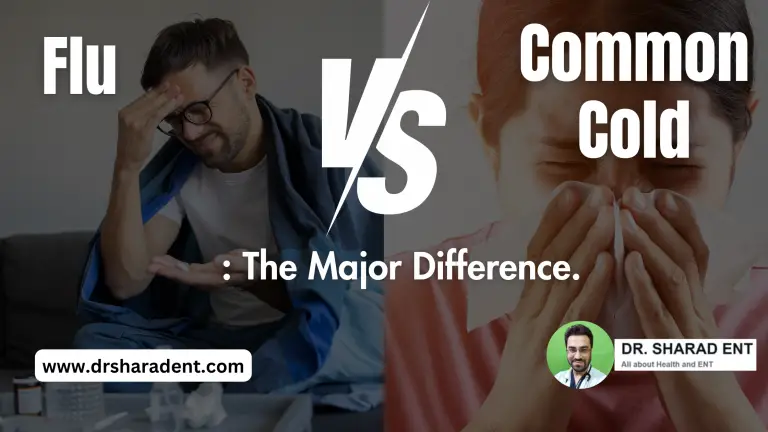When you notice the onset of sniffles and a developing sore throat, it is not uncommon to mistakenly associate these symptoms with either flu or the common cold. Despite sharing certain respiratory similarities, these are distinct illnesses characterized by unique features. To gain deeper insights into these often confused conditions, let us delve into the significant differences between the flu and the common cold, aiming to refine our understanding of their respective characteristics.
Causal Agents
The flu, or influenza, happens when you get infected with influenza viruses. They're the main reasons for flu symptoms. Nevertheless, a variety of viruses, with rhinoviruses taking the lead, have the potential to trigger the common cold, playing a substantial role in its onset.
Commencement and Intensity
In the context of onset and severity, influenza is characterized by a sudden and immediate beginning, marked by intensified symptoms such as a substantial fever, body aches, and pronounced fatigue. On the other hand, in contrast to influenza, the common cold typically unfolds gradually, with less intense symptoms like a runny or congested nose and a mild cough.
Distinguishing Fever
When differentiating between fever associated with influenza and that linked to a common cold, it's noteworthy that influenza commonly manifests with a pronounced fever, often surpassing 100.4°F or 38°C. On the other hand, while a mild fever can be a symptom of a cold, it tends to occur less frequently and is generally not as elevated as observed in cases of influenza.
Illness Duration
People experiencing the flu typically endure symptoms for about one to two weeks, often accompanied by lingering fatigue and weakness post-recovery. Conversely, the common cold usually resolves within a week, with milder symptoms compared to the flu.
Respiratory Symptoms
Respiratory symptoms like coughing, sneezing, and a sore throat can be activated by both the flu and the common cold. Nevertheless, these signs are usually more prominent and noticeable during a common cold. These stronger symptoms often affect breathing more than what happens with the flu.
Complications
Individuals must understand the need for proper treatment of flu as it can cause serious problems. Ignorance of the flu can lead to issues like a sinus infection that can stay with individuals for a lifetime. But when it comes to the common cold, it never leads to serious problems. Precaution is still better than cure, and the common cold should also be taken seriously so as not to worsen the existing bodily issues.
Vaccination
Considering that the virus of flu evolves over time, it is a wise decision to get an annual flu shot to protect yourself from future complications. This vaccine provides defense against various flu strains that might surface annually. In contrast, a vaccine for the common cold doesn't exist because this illness stems from various viruses, posing a challenge in developing a single vaccine encompassing all potential culprits behind the common cold.
All In All
Recognizing variations in the onset, severity, duration, and possible complications of the flu and common cold is essential. Despite similar symptoms, accurately identifying the illness is crucial for selecting appropriate treatment and preventing the spread of respiratory infections. Consulting with a healthcare professional is advisable for an accurate diagnosis and effective symptom management.







